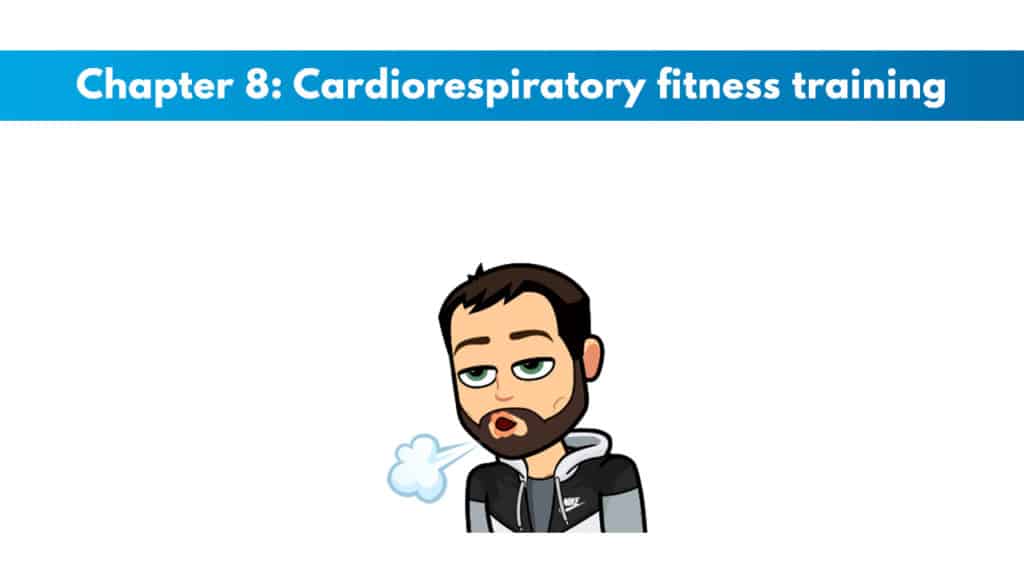
If you have not signed up for NASM CPT, sign up here to save 25% with my personal code PTP25.
Get your copy of the NASM CPT exam cheat sheet. It helps immensely in studying for the exam.
My PTP students report cutting their NASM study time and effort in half with Trainer Academy.
Benefit from the Exam Pass Guarantee and Retake Fee Guarantee. Plus, take advantage of my current discount code PTPJULY for 35% off the MVP Program (Ends July 8th, 2025).
Try it out for free here to see if it’s right for you, or read my detailed review for further insights.
Exclusive PTP CPT Offers |
||
|---|---|---|
Most Popular Cert | Best Online NCCA Cert | Best Study Materials |
Gold Standard Cert | A Good Option | Best CPT for you?  |
Chapter 8 NASM study guide
Important definitions to memorize
Overtraining: Going beyond the point in your training where you cannot recover. Giving one’s body enough time to recuperate and recover from exercise is important. To do this, you need to include rest and change up the exercise intensity of a workout routine. Overtraining can cause a decrease in performance. In extreme circumstances, one can even lose muscle size and strength.
General warm-up: A general warm-up is used to get the whole entire body to perform general exercises. Examples of a general warm-up are riding a stationary bike or jogging on a treadmill before a workout.
Specific warm-up: Specific warm-ups are used to prepare the body for specific exercises. You can think of a specific warm-up as performing knee push-ups to warm up the chest before moving onto the bench press.
Exclusive PTP CPT Offers |
||
|---|---|---|
Most Popular Cert | Best Online NCCA Cert | Best Study Materials |
Gold Standard Cert | A Good Option | Best CPT for you?  |
Cool down: Cooling down the body after exercise is important as it transitions our bodies back to a state of rest. The benefits include slowly lowering one’s heart rate, preventing blood pooling in our extremities, restoring our normal body temperature, and gradually bringing our muscle length back to an optimal state.
FITTE factors
- Frequency: Frequency is how many sessions are done in a certain timeframe. Usually, time frames consist of a one-week period of time. The recommended frequency for exercise for somebody whose goal is general health is every day of the week for short periods of time. The recommended frequency for improving fitness levels is three to five days weekly.
- Intensity: Refers to how much demand the body is put through during a particular workout. The way to measure intensity is usually by measuring one’s heart rate. Moderate intensity is preferred for people who aim to improve their general health. This means increasing respiratory rates and heart rates but not so intense that your client is breathless and exhausted. The level of intensity ranges between 65% and 95% of your client’s maximum heart rate.
- Time: This refers to how long a workout session lasts. This is typically measured in minutes. For general health goals, 30 minutes a day and five days a week are what is recommended.
- Type: This refers to what type of physical activity is performed. General types of exercises that are encouraged include mowing the lawn, walking to the grocery store, and using stairs instead of elevators. To improve one’s fitness level, stationary bikes, step machines, treadmills, aerobic classes, weight training, and sports are typically used.
- Enjoyment: The enjoyment level is a very subjective thing that people experience individually. This is also one of the most important parts of any workout program. It should coincide with the person performing the program’s likes, dislikes, and personality.
Training Zones
Zone 1:
- Heart rate Max between 65% and 75%
- Yoga, walking, and light jogging
- Low intensity overall
Zone 2:
- Heart rate Max between 76% and 85%
- Kickboxing, step classes, dance classes, group classes in general
- Moderate training intensity
Zone 3:
- Heart rate Max between 86% and 95%
- The max cardio effort, sprints, High-intensity interval training
Circuit training: A beneficial form of cardio training. Circuit training is where you perform cardio exercises and/or strength exercises in succession, with one right after the other and practically no rest between. You can use the circuit training cardio methods and all three of the OPT models stabilization, strength, and power. Circuit training is just as beneficial as other forms of cardiovascular training for improving fitness levels.
Interval Training: Intensity intervals vary throughout the workout. An example is a one-minute high-intensity interval and then a 3-minute recovery.
Recommended exercise for adults: 150 minutes of moderate-intensity aerobic exercise or 75 minutes of vigorous high-intensity aerobic exercise.
Cardiovascular training for general health: A moderate intensity is recommended at or below 60% of maximal oxygen consumption.
If you want additional study materials, check out the team over at Trainer Academy. They have incredible study materials for NASM And I have a special limited-time discount for my readers. I also suggest you check out my review on Trainer Academy here.

 Have a question?
Have a question? 



Tyler Read
PTPioneer Editorial Integrity
All content published on PTPioneer is checked and reviewed extensively by our staff of experienced personal trainers, nutrition coaches, and other Fitness Experts. This is to make sure that the content you are reading is fact-checked for accuracy, contains up-to-date information, and is relevant. We only add trustworthy citations that you can find at the bottom of each article. You can read more about our editorial integrity here.